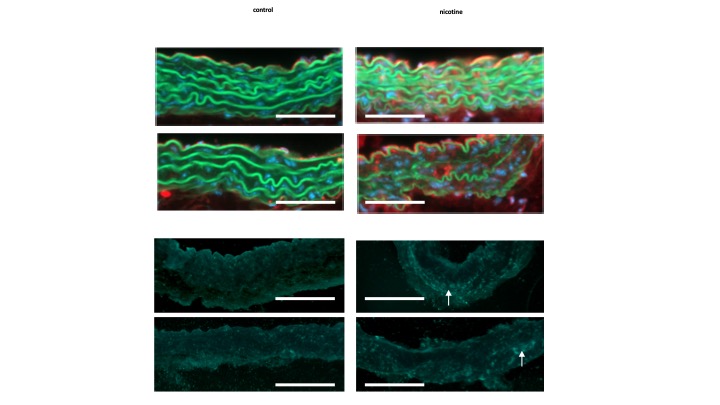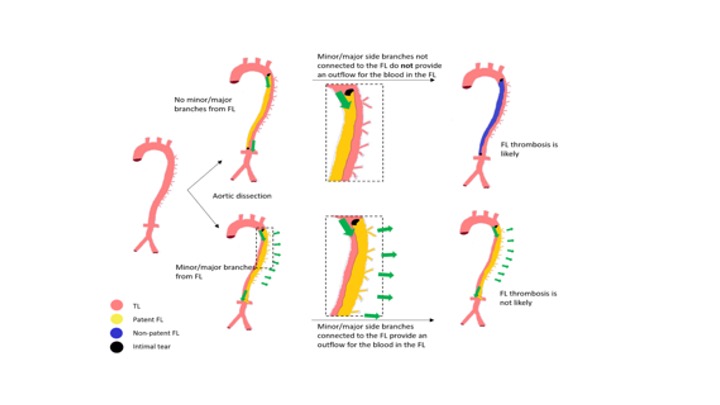Diseases of the aorta are becoming increasingly common in an aging population and are of high relevance to society as a whole. Abdominal aortic aneurysms (AAA) and dissections (AD) are serious diseases of the aorta, the pathogenesis and therapy of which have not yet been adequately investigated.
The research group Aortic Lesions investigates the pathophysiology of these diseases. A special focus is on the investigation of pathomechanisms of established risk factors, such as age, hypertension and nicotine abuse. In addition to basic science questions, innovative therapies and diagnostic approaches are also pursued. A network of national and international scientists creates a stable foundation that enables us to share knowledge gained and to deepen our understanding of disease-specific processes. The overall goal of the research group is the translation of experimental findings into clinical practice.
AAA is characterized by progressive destruction of the aortic wall. Elastin fragmentation by increased expression (top row right, red fluorescence) and activity (bottom row right, green-blue fluorescence) of matrix metalloproteinases (MMPs) mechanistically leads to an increase in aortic stiffness, which in turn is the contributing factor to the diameter progression of AAA. This process is also maintained by chronic inflammation, the genesis of which has not yet been fully elucidated. However, smoking conventional and e-cigarettes accelerates these processes.
Most AAA harbor an intraluminal thrombus (ILT) that sub-totally lines the lumen. Such an ILT is present in up to 80% of an AAA. The role of the ILT remains the subject of current research approaches, and its role remains divergent. Whereas biomechanical studies suggest a rather protective effect on the overall stability of the AAA, molecular biological approaches described a destabilizing destructive effect on the AAA wall. Platelet activation is an obligatory prerequisite for ILT establishment and growth. This platelet activation at the ILT of an AAA appears to be of disease-specific interest.

AD represents a medical emergency associated with a significant pain event for the affected individual. AD results from a tear of the innermost endothelial cell layer, leading to the formation of a second false lumen within the aortic wall. After the acute event, there is successive laceration of the aortic wall. Due to the loss of stability, there is a long-term risk of formation of a post-dissection aneurysm with potential rupture. Mechanistically, processes that increase the likelihood of the occurrence of the acute event should be identified. In this regard, both biochemical and mechanical individual-based morphological processes and conditions are of great scientific interest. Close collaboration with researchers from the "bioenginnering" field is essential for the discussion of corresponding questions and hypotheses. Most recently, the role of small side branches called lumbar arteries, which arise from the false lumen of the AD, was shown to be underestimated. They seem to maintain patency of the false lumen. This could generate new therapeutic approaches in the future, as occlusion of these side branches may have therapeutic potential.



